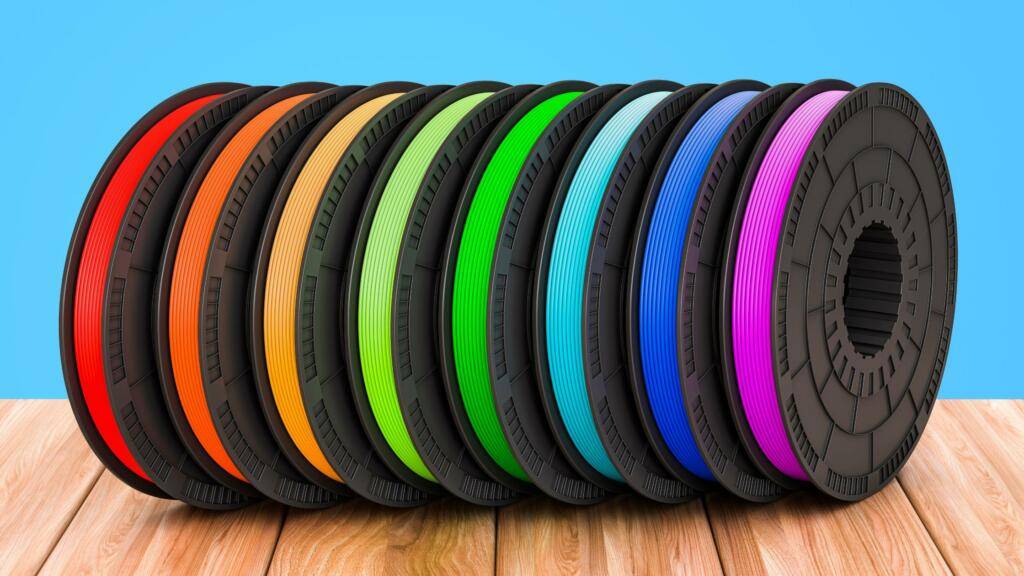Among the various types of materials available for 3D printing, PETG vs PLA is one of the most common question. Both materials have unique properties that make them suitable for different applications. In this blog, we’ll dive deep into the characteristics, benefits, and limitations of PETG and PLA to help you make an informed decision for your next 3D printing endeavor.
Table of Contents
Understanding PETG and PLA
What is PETG?
PETG, or Polyethylene Terephthalate Glycol, is a thermoplastic polymer that combines the ease of use of PLA with the durability of ABS. PETG is known for its strength, flexibility, and resistance to environmental factors like moisture and chemicals. It is a popular choice for functional and mechanical parts due to its robustness.
What is PLA?
PLA, or Polylactic Acid, is a biodegradable thermoplastic derived from renewable resources like corn starch or sugarcane. PLA is widely used in 3D printing because of its ease of use, low melting temperature, and minimal warping. It is an excellent choice for beginners and for projects where environmental sustainability is a priority.
Comparing PETG vs PLA
Ease of Use
PLA is renowned for its user-friendliness. It prints at lower temperatures (190-220°C) and adheres well to the print bed without requiring a heated bed. PLA is less prone to warping and doesn’t emit strong odors during printing, making it ideal for indoor use. PETG is relatively easy to print with, though it requires a slightly higher printing temperature (230-260°C) and benefits from a heated bed (70-90°C). It has good bed adhesion and lower warping tendencies compared to ABS, but slightly more than PLA. PETG also emits minimal odors, making it suitable for indoor environments.
Strength and Durability
PLA is more brittle compared to PETG, which limits its use in applications requiring high strength and impact resistance. However, for decorative items, prototypes, and low-stress applications, PLA’s strength is typically sufficient. PETG excels in durability and impact resistance. It combines the strength of ABS with the flexibility of PLA, making it ideal for functional parts, mechanical components, and items that will endure wear and tear.
Environmental Impact
PLA’s biodegradability is one of its most significant advantages. Derived from renewable resources, it breaks down into natural components over time, reducing environmental impact. This makes PLA a preferred choice for eco-conscious users. While PETG is not biodegradable, it is recyclable. Its chemical resistance and durability mean it has a longer lifespan, which can offset its environmental impact compared to single-use or less durable materials.
Aesthetic Quality
PLA offers a smooth finish and is available in a wide range of colors. It is less prone to stringing and oozing, which results in clean, high-quality prints. PLA is often chosen for aesthetic projects where detail and appearance are paramount. PETG also produces high-quality prints with a smooth finish. However, it is more prone to stringing and oozing compared to PLA, which may require additional post-processing. PETG’s slightly glossy finish can enhance the visual appeal of the printed objects.
Choosing the Right Material for Your Project
When deciding between PETG and PLA, consider the specific requirements of your project:
- For Beginners and Simple Projects: PLA is the go-to choice. Its ease of use, minimal warping, and excellent print quality make it ideal for newcomers and for creating prototypes, models, and decorative items.
- For Functional and Durable Parts: PETG is the better option. Its strength, flexibility, and resistance to environmental factors make it suitable for mechanical parts, outdoor use, and objects requiring greater durability.
- For Eco-Friendly Projects: PLA’s biodegradability makes it the preferred material for environmentally conscious projects, especially for disposable items or products where sustainability is a key consideration.
Conclusion
PETG vs PLA have their unique advantages and are well-suited for different types of 3D printing projects. By understanding the properties of each material, you can choose the one that best aligns with your project’s requirements, ensuring optimal performance and quality. Whether you’re a beginner looking for an easy-to-use material or an experienced maker in need of durable and functional parts, PETG vs PLA offer reliable solutions for a wide range of applications.


